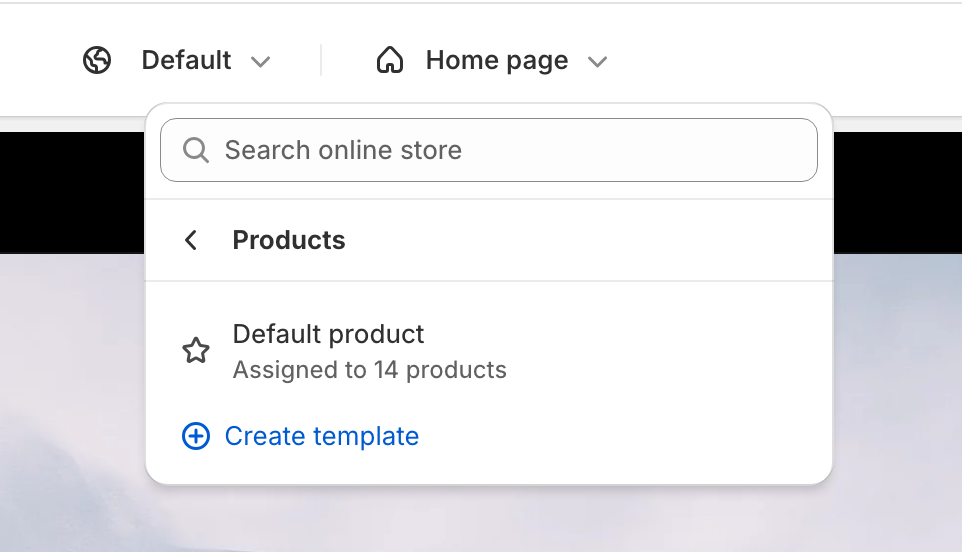The Shopify product page is not just another component of your digital storefront. It is the engine that drive your brand’s visibility and connects your prospects and customers to your offerings, playing a significant role in building your brand and boosting your online presence.
In essence, the dramatic interplay between the Shopify product pages’ SEO practices and an enhanced user experience (UX) creates the recipe for your store’s success.
In this post, we explore the pivotal role of Shopify Product Pages and the best practices to optimize them towards carving a memorable narrative of your customer’s journey.
Shopify Product Page Template: Creating a Complete Guidebook on Your Products
The Shopify product page template is your tool to craft vibrant, engaging, and completely functional pages portraying your product information. Like the About Us page and Thank You page, product pages carry their significance, and it’s your role to make them shine.
Brings in prospects and customers
Product pages are the repositories of rich information on your product portfolio. With each page dedicated to a product or an array of products, they furnish all the required information for the customers to arrive at a buying decision. From pricing and delivery to product images and warranties, they cover all details, in turn letting your customers enjoy an enhanced user experience.
The in-depth product descriptions and the plethora of relevant information instill confidence in your customers, reassuring them of their choices.
Builds brand integrity
As customers use product pages to gather inputs on your offerings, the more detailed and accurate pages build their trust in your brand. Ensuring that product pages are crafted with precise and complete information lets you impart pleasant purchasing experiences to your customers. This, in turn, boosts customer loyalty and builds brand trust.
Reduces customer dissatisfaction
With product information well-captured on product pages, customers can access all necessary details, including return policies, exchange options, and more. This comprehensive approach reduces the chances of misunderstanding between you and the customers, thereby minimizing their levels of dissatisfaction and boosting their confidence in your store.
Elevating Shopify Product Page to a Marvelous User Experience
Shopify product pages contribute significantly to educating and informing your customers about your offerings. Your Shopify Product Page drives sales and brings in prospects by spreading information on your products while focusing on imparting an enhanced user experience.
Use concise, accurate, and relevant product titles and descriptions
Product titles and descriptions are the most vital elements on your product page. Unclear, ambiguous, or incomplete descriptions may turn your customers away. Keep titles brief, precise, and relevant.
Include all specifications on the product such as colors, sizes, shades, and anything else, as required.
Include clear product images and videos
Product images best showcase your offerings. Include sharp, high-quality images that highlight your product features effectively. It’s a best practice to have images from diverse views to better cover your product.
Additionally, include a step-by-step video showing how the product works for complicated or high-end products. This will go a long way in convincing customers while ensuring an enhanced user experience.
Use relevant, accurate, and compelling headlines
The product headline is what your customer first reads. This implies you must craft an eye-catching, attention-grabbing, yet relevant headline. Highlight succinctly how the product addresses your prospect’s pain points.
Maintain a casual or formal tone based on your brand while infusing an emotional touch.
Add FAQs section
Your product pages may be comprehensive, including all details about your products. Nevertheless, a glance at key concerns in the FAQ section will let your customers make faster decisions, imparting an enhanced user experience.
Incorporate product reviews
In the online world, customers rely more on reviews, feedback, and ratings from other users. Including your product reviews on the product page enhances your customers’ trust while making their buying choices easier. In a 2023 survey, 93% of shoppers say that ratings and reviews are the most important factor impacting purchase decisions. And 45% of consumers won’t purchase a product if there are no reviews available for it.
Include info on price, delivery, courier, and other aspects
E-commerce stores often face cart abandonment issues due to missing important details. Ensure your product pages include info on price, delivery options, tracking details of courier service, if any, and such.
Avoid last-minute surprises for your customers regarding delivery costs, etc. This will not only impact their current purchase but also discourage them from revisiting your store.
Appropriately place the Buy Now/Add to Cart button
If you are a retailer selling a single item, the Buy Now option works for you. If you sell multiple items together, include the Add to Cart button.

In either scenario, your goal is to make your prospect hit the button. So, place it prominently and use the perfect contrasting color for the background and text. Make sure that this button overrides everything else on the product page.
Leveraging SEO to Boost Your Shopify Product Page
Your Shopify Product Pages are as crucial as any other page on your digital storefront. Often, they are ignored when it comes to SEO. However, you must optimize these pages as well to get the best results.
Keep the Shopify product page URL concise
It’s best to use a product page URL that’s simple, easy to remember, and user-friendly. Avoid using numbers or special symbols in the URL. Use keywords that describe the product in the URL, it helps search engines and tools like NotFoundBot to better understand the item that you are selling.
Focus product page metadata on users
Your Shopify product page titles must include keywords. But, make sure you always craft these titles keeping in mind your target audience.
Optimize product page descriptions and product images
Make sure your product descriptions are concise, precise, and contain keywords. Use product-related transactional keywords and include them naturally.
Leverage AI-based tools like ChatGPT or hire an excellent copywriter to do it for you.
Ensure product images adhere to the appropriate size. Too large images take a long time to load; if they’re too small, they’re unclear and shoddy.
Build backlinks to your Shopify product pages
While it’s not very common to use backlinks to product pages, it works best in some cases. For example, if you sell unique items, these may get featured on other websites as “Amazing gift ideas” or such. This increases the visibility of your product pages online.
Edit the Shopify Product Page Template
The Shopify product page template is like a cookie cutter for stamping out cookies. Design the template(s) for how you want your product page to depict your product, and then start stamping out products.
To edit your product page template to make basic alterations (for OS2.0 themes):
Note: Before editing your theme we always recommend that you make a copy of it, or download a backup copy.
Login to your Shopify Admin Account.
- Navigate to Online Store.
- Select Themes
- Find the theme you wish to alter and select Customize.
- Select Products from the page selection dropdown.

- You can now either select an existing template, or create a new template.
- You can then make changes and select Save.
For some features, you likely want to consider adding an app from the Shopify App Store to help compliment your product pages. For other basic changes to your product page, you might be able to accomplish them by simply editing your Shopify product page template.
Add New Product Pages to Your Shopify Store
You can add product pages to your digital storefront in a few steps.
Login to Shopify Admin Account.
- On the left of the Shopify dashboard, navigate to Products.
- Click Products.
- Click Add Product.
- On the product details page, you see the title, description, and media. Add all the info.
- Next, enter other product details like shipping address, pricing, product attributes, etc.
- Click Save.
Final Thoughts on Optimizing the Shopify Product Page Template
Shopify Product Pages serve much beyond a source of product information. Crafting these pages smartly, leveraging the interplay between SEO practices, and imparting an enhanced user experience will open the gateways to bringing in prospects, driving sales, and growing your store. Setting up a Shopify product page template that is concise, yet detail oriented, with good images, product reviews, and questions and answers can go a long ways towards increasing conversion rates, customer satisfaction, and overall Shopify store success.
Back to Main Guide: Optimize Shopify Page Templates for Shopify Store Success
Next: Optimizing Shopify Collections Page for Great User Experience (UX) and SEO
